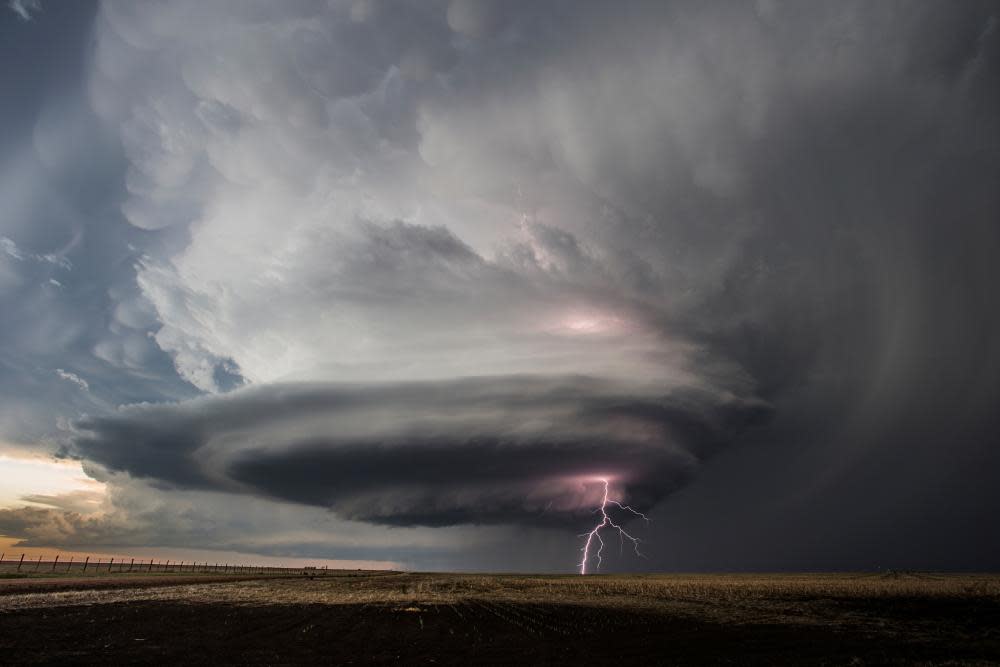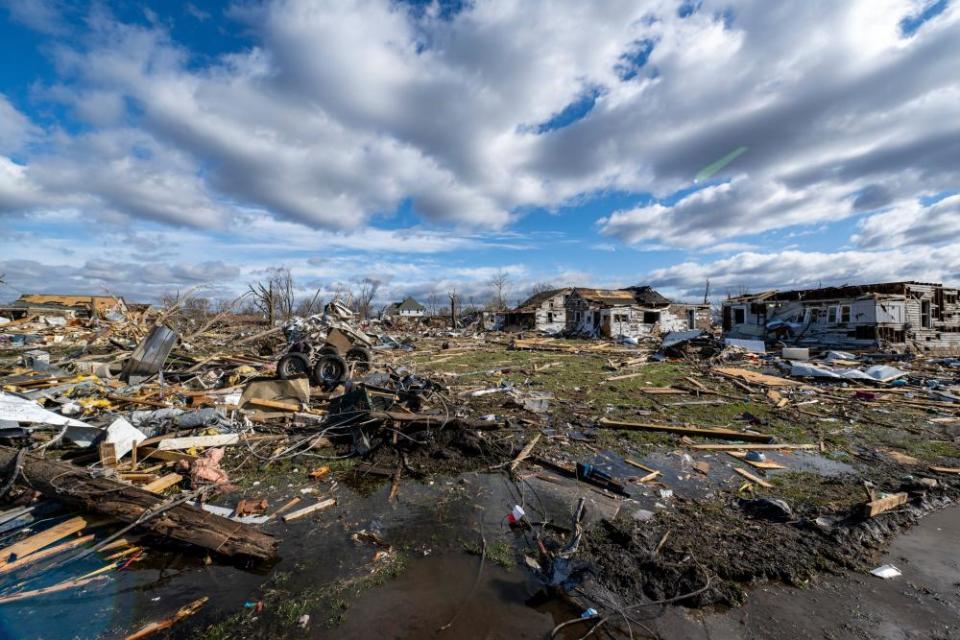‘Tornado alley’ is shifting farther into the US east, climate scientists warn

A spate of devastating tornadoes that have recently ripped through parts of the eastern and southern US states could portend the sort of damage that will become more commonplace due to changes wrought by global heating, scientists have warned.
More than 50 people have died from the tornadoes and thunderstorms in the past two weeks, with the latest powerful storm system wreaking havoc in states including Alabama, Illinois, Mississippi, Tennessee and Arkansas on Friday. One man survived by hiding in his bathtub, while a separate storm caused a tiger to escape a zoo.
Related: Deadly storms and tornadoes kill at least 32 people in several US states
Joe Biden, who has vowed to help those left homeless by the storms, expressed astonishment at the severity of the tornado that leveled much of Rolling Fork, Mississippi, when he toured the town in the west of the state on Friday.
“Three minutes, this neighborhood is basically gone,” the president said. “Unless you physically saw it, it’s hard to believe. Three hundred homes and businesses that are nothing more than piles of twisted materials mixed up with personal items that mattered so much – teddy bears, family albums, clothes, dishes. The basics of life, all gone.”
Tornadoes have long posed a peril to a column of the central US known as “tornado alley”, spanning parts of Texas, Oklahoma, Kansas and Nebraska. While the influence of climate change upon tornadoes is still being investigated by scientists, some researchers say there is evidence that this alley is shifting eastwards and that storms could become more powerful as the world continues to heat up due to the burning of fossil fuels.

Previous research has shown that over recent decades there has been a stagnation, or even slight drop, in the number of tornadoes in their traditional home range of the Great Plains, but an uptick in states further east, such as Tennessee, Mississippi, Alabama, Illinois and Indiana.
These dervish-like storms also appear to be hitting earlier in some instances – tornado season usually starts in spring but parts of the south just had their most active tornado winter season on record and recent research found that milder US winters could be helping spur conditions ripe for earlier storms.
Still, the factors driving tornadoes are complex and the link to climate change is far less understood than it is for phenomena such as heatwaves, for which scientists are now able to pinpoint an exact global heating influence for individual events.
Walker Ashley, lead author of research that found the average number of supercells – huge, rotating storms that spawn the strongest tornadoes – are expected to increase significantly this century, said that four key factors are at play in tornado formation.
One is moisture in the atmosphere, which scientists are virtually certain is increasing due to rising global temperatures, while a second is instability in the atmosphere, the difference between hot and cold air that Ashley called the “gasoline needed for a storm” which is also expected to worsen amid the climate crisis.
But the other two key ingredients – wind shear, the change in wind direction and speed at different altitudes that “takes an ordinary storm and turns it into an organized menace”, according to Ashley, and the mechanisms that lift parcels of air up before they become storms – are more unclear in terms of their outcomes in a hotter world.
“Scientists are working very hard at these questions and we’d all like simple answers but these are tough questions to answer – I’d argue against linking any individual event to climate change,” said Ashley, an atmospheric scientist at Northern Illinois University. “A tornado can be just a few yards wide, not spanning a large area like a heatwave, so it will take a while before we have specific attribution.
“But we are fundamentally changing the ingredients that make a tornado, we are loading the dice towards more severe storms. We are increasing the odds that we will have more severe tornadoes throughout the 21st century, we are seeing that change happen already. The perils from these storms will probably get bigger, too.”
Ashley said that global heating may make these tornadoes stronger, but the other key variable is the “expanding bullseye” of where people live in the path of these rampaging columns of wind and hail, Ashley said. As tornadoes, on average, edge east they are coming into contact with more densely populated areas – think sprawling suburbia more than the isolated Kansas farm in The Wizard of Oz.
“There’s been explosive growth in the south in recent years and that unfortunately means we are turning up both the number of tornadoes in this area and the number of people exposed to them,” Ashley said.
“This has consequences – we are all paying that through premiums and government grants as we’ve collectively determined it’s OK to live in risky areas.
“We will need to think about building better and smarter, thinking more about how resilient the roof and garage doors are, for example, to live with these impacts. Because they are not going away.”

